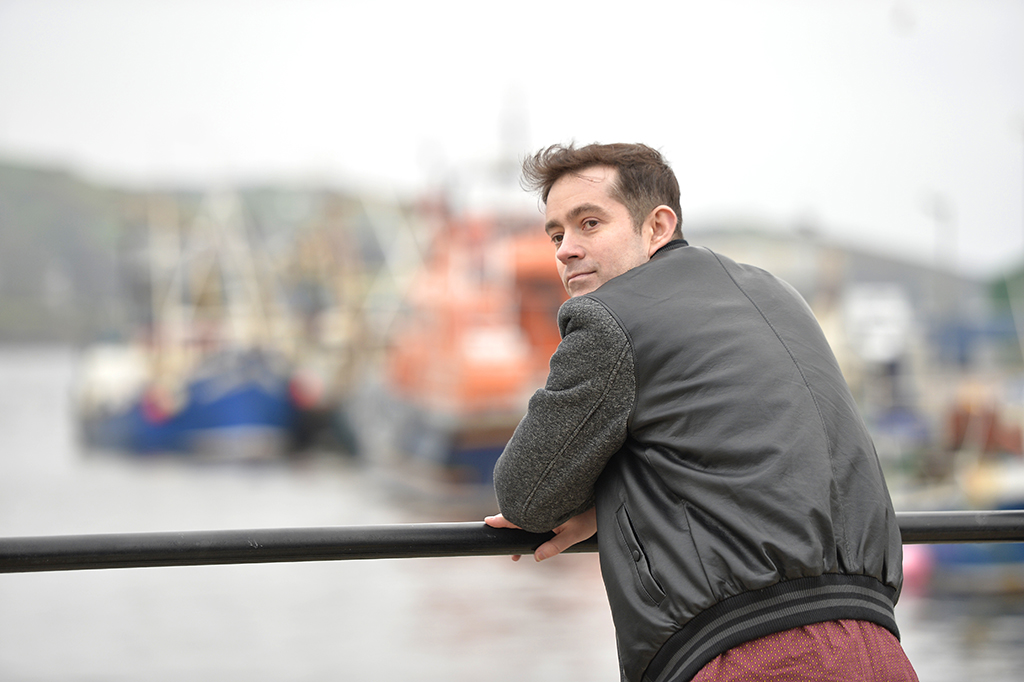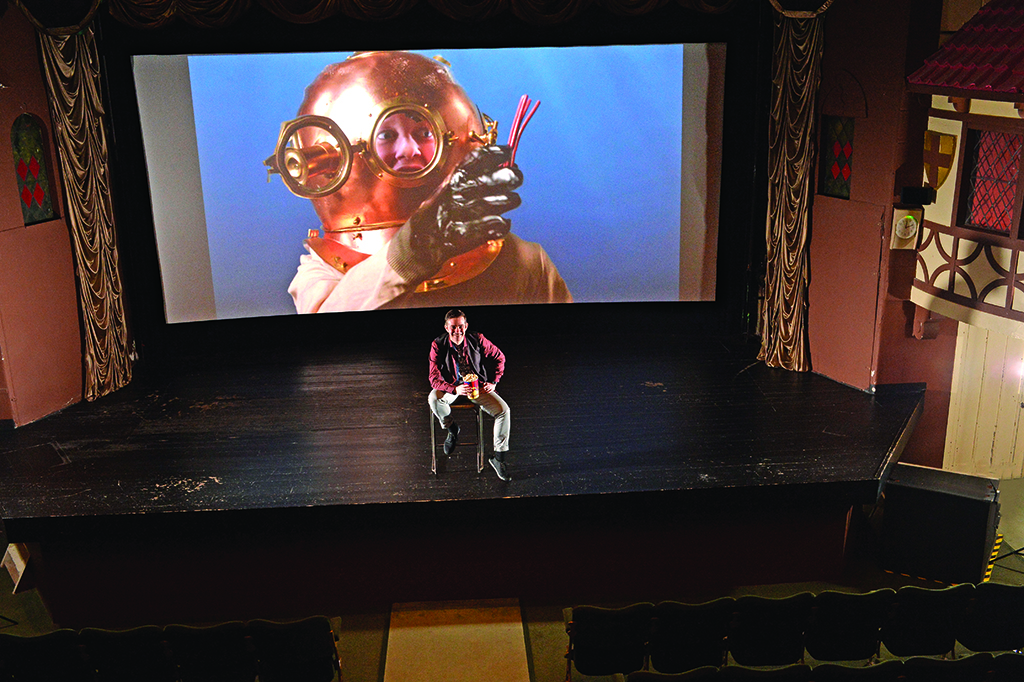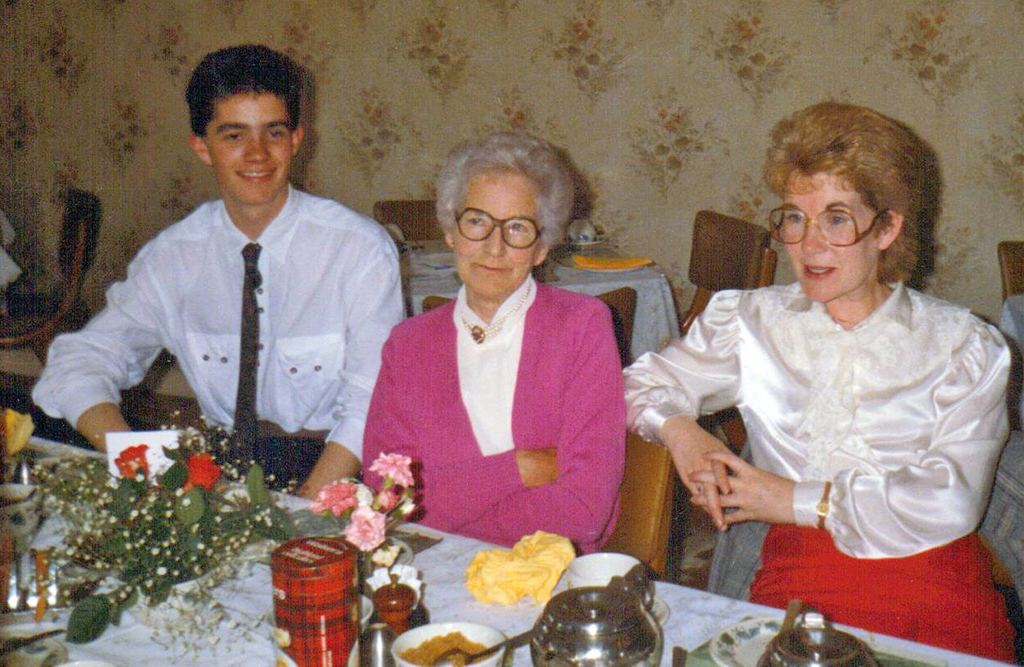
The spirit is strong for the BBC’s Jamie McIvor
As a BBC news correspondent, Jamie McIvor has seen more of the country than most, but for him nowhere can match his home town, Campbeltown.
BBC Scotland’s Local Government and Education correspondent Jamie loves nothing more than returning home, especially to indulge his love of running.
This feature was originally published in 2014.
Sailing into Campbeltown on the ferry from Ardrossan gives you a very different impression of the town compared to the one you get driving in by road.
As you sail up Campbeltown Loch, the town slowly opens up before you – you can see the Victorian villas that were built by the owners of the local whisky distilleries, then up into the town centre and the Art Deco Picture House cinema.
Compared to such an inspiring vista, driving into the town from the north feels a bit like you’re entering via the back door. Up until the 1930s, the sea is how most people would have arrived.
Returning to Campbeltown will always feel like coming home to me. There are McIvors buried in the old graveyard going back to the 1850s, when the family came over to Scotland from Ireland during the Potato Famine. I grew up in the town and cut my teeth as a junior reporter on the Campbeltown Courier, before my career took me off to the Press & Journal and Scotland on Sunday. I then joined the BBC.

Jamie McIvor on a trip back home (Photo: Angus Blackburn)
Some of my earliest memories of Campbeltown come from the mid-1970s, when my granny would take me with her to do the shopping. At that time, people did this every day, going round all the different shops to buy that day’s provisions. Everybody knew everybody else and there was a strong sense of community.
While the town may have two supermarkets on its periphery now, the heart of Campbeltown has managed to retain its character, with independent businesses such as bookshops and florists. It’s arguably the most isolated town on the British mainland, and I think its location has helped to preserve that sense of self.
People feel proud of the whiskies that are produced in the ‘wee toon’ – something I don’t think you always get in other parts of Scotland.
The same is true of the creamery, where my dad still works. Although it’s now owned by First Milk, a farmers’ co-operative based in Paisley, people in the town still feel a real sense of ownership and loyalty to the cheese that’s made there. With three distilleries and its own cheese, not many towns of just 5,000 people can boast such strong brands.
Being isolated has also influenced the culture of Kintyre. If you had to go to Glasgow by bus in the 1970s or 1980s, you were faced with easily a six-hour journey, including a wait at Tarbert to change buses. Even the next big settlement, Lochgilphead, is 50 miles away, so that isolation has helped to keep the cultural life alive in the Mull of Kintyre.
The Picture House opened in 1913. It wasn’t just one of the first purpose-built cinemas in Scotland, it was one of the first in the whole of Europe. I remember going to see all the big films of my childhood there – Star Wars, ET and the first Indiana Jones film, Raiders of the Lost Ark.

The Picture House, built in 1913 and still going strong. (Photo: Angus Blackburn)
Back in those days, you had to wait four or five months for the latest blockbusters to make their way to Kintyre because there were so few prints in circulation. Now, you can see the hottest films just days after they’ve had their première. And last year the cinema – which is run by the local community – won a lottery grant to upgrade to digital projectors. The cinema is now bidding for further cash to restore and expand the site.
When I was growing up, there wasn’t the same range of art galleries or live music that you might get in a bigger town or a city, but that meant that when performers did come to Campbeltown, a lot of local people would go to see them.
The same is now true of the Mull of Kintyre Folk Festival, which runs over a long weekend each August: even if people aren’t that into folk music, they still come along and get into the atmosphere. It has attracted some big names, with the likes of The Fratellis playing at last year’s festival.
I still make it back to Campbeltown every eight or nine weeks, either for a weekend or a longer break. The new three-year trial ferry route, which began last summer to link Ardrossan and Campbeltown during the summer, is making a big difference. It’s the first time since 1939 that there’s been a regular service ‘doon the watter’ to Kintyre.
You can leave Central Station in Glasgow at 5.30pm and get straight down to Ardrossan, allowing you to get into Campbeltown at 9pm.
It has become so much easier now; even for the few days each year when the Rest and Be Thankful pass is closed, the drive to Kintyre is much more straightforward. And if you’re not pushed for time, you can stop off at the Loch Fyne Oyster Bar at Cairndow or at Inveraray.
One of the things that I find most attractive about the area is that it’s steeped in history. And I don’t just mean ancient history either: there are all sorts of more modern stories that have caught my imagination too.

A teenage Jamie out with his granny and auntie in Campbeltown (Photo: Jamie McIvor)
On Davaar Island, at the mouth of Campbeltown Loch, you have cave paintings of the Crucifixion, drawn by Archibald MacKinnon, a local teacher, in 1887.
Near Machrihanish, there are the remains of a radio mast erected in 1905 by a Canadian inventor called Reginald Fessenden, who sent the first two-way radio transmission across the Atlantic using Morse code.
But mention Machrihanish and people immediately think of the massive 10,000ft-long runway, which was used by the Royal Air Force and the American military and which was even capable of being a landing site for NASA’s space shuttle. The area is now demilitarised and has been purchased through a community buyout, creating more opportunities for local people to shape the future of the area.
Kintyre was important for other military purposes too. The naval air arm used it after the First World War and the RAF employed it as a training base during the Second World War. That led to a great story that any local person of a certain age will enjoy telling – the time that the Royal Hotel was attacked in an air raid by the Luftwaffe.
While I love the local history and all of its stories, one of my favourite spots is Machrihanish beach itself, which is one of Scotland’s hidden gems.
From talking to visitors, I’m always surprised by how few people know there are such beautiful beaches in Scotland. It’s five miles of golden sands and is now becoming a favourite spot for serious surfers.
For the rest of us, you can just sit and gaze out towards Islay and Jura and Gigha. It’s amazing how the islands can feel so close, yet so far away. When I was growing up, it wasn’t so easy to get to them, even close ones like Arran.
On a clear night from Campbeltown, you could see the lights at Blackwaterfoot on Arran but it wasn’t until the ferry service started from Claonaig on Kintyre to Lochranza that you could easily get to the island.
Now, even though I’m based in Glasgow, this isolated but thriving community is always in my heart.
TAGS

